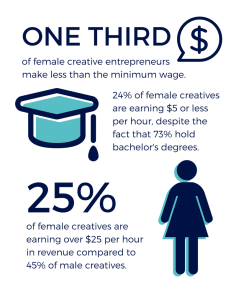Lack Of Brand Safety Is A ‘Death Spiral’ For Marketers
by Tobi Elkin, Staff Writer @tobielkin, March 24, 2017
As more advertisers curtail non-search advertising on its platform, Google finds itself in the line of fire and looking for technology solutions that also require human judgment. Google acknowledged it will hire more people and deploy more resources to confront the problems advertisers are having—not knowing whether their ads will appear next to offensive, hate-filled content on its network. Further, the U.K. boycott of advertising on YouTube and the Google Display Network has spread to the U.S. as advertisers including AT&T, Verizon, and Johnson & Johnson have joined the growing list of advertisers concerned about brand safety issues on Google and other platforms.
“The story is how a digital marketing campaign can eviscerate and destroy your brand overnight,” said Eric Schiffer, CEO of DigitalMarketing.com and ReputationManagementConsultants.com, who works on crisis and brand reputation issues. Schiffer said Google—and other large platforms, for that matter—need to put measures in place to improve content monitoring. If they don’t, they will also destroy their revenue stream. One wonders just how much of a chink in revenues this type of crisis might provide.
“You have brands today that are realizing that if they allow themselves to be tied to platforms that have content that spew forth hate, their customers are going to be barking mad,” Schiffer said. Of course it’s not helpful that there’s so much hate-filled content so readily available online. “It’s a prescription for a death spiral for a brand,” he said. “Google [and Facebook] have to walk a difficult tight-rope between the First Amendment and their own revenues. They have to find much of that content disgusting and disgraceful.”
What’s the appropriate response? “I think they have to shut it down. They do it through leveraging technology that parses words, and they need to hire more people to parse through content that has a certain number of views and that’s tied to their brand advertisers,” Schiffer said. The question, he said, is whether Google “passes or fails” based on whether it’s able to curtail hate-filled content tied to brand advertisers.
Schiffer said large companies have a responsibility to “asphyxiate hate”—but programmatic media technology is certainly not helping. The battle cry in the ad-tech industry is about “growth,” “scale” and, of course, “speed.” Against that backdrop and the insane proliferation of content found online, programmatic technology either has to slow down or find the right tools to distribute ads against brand-safe right content. What are the appropriate standards and technology guardrails for so-called “brand safety,” and what role do actual human beings play in this process?
YuMe executives have been watching the Google situation closely as it works with advertisers that have curtailed advertising on Google. “As an industry, we need to hold each other accountable for ensuring the highest standards for brand safety and transparency. Our research shows there is a direct correlation between brand safety and brand favorability which relates to brand advertising value,” stated Jorg Nowak, senior vice president, international.
“It’s great to see brands and agencies taking control, including one of our longstanding clients, Havas, and demanding change by only transacting with companies that can offer brand safety guarantees they require. But it really should not have to come to this. The answer to achieving the right levels of brand safety resides with implementing the right policies, processes, and software, all of which rely on partnership and technological innovation,” Nowak stated.
Nowak said “Advertisers should be able dictate parameters at the outset of a campaign and have simple access to make changes at any point during a campaign. Technology should work to their advantage, automatically detecting and avoiding content or contextual factors, such as excluding sites or adjacent content that does not meet safety criteria. The value of an embedded SDK in publisher sites and apps, for example, works to ensure contextual requirements are met to ensure a brand safe environment.”
Kargo Founder & CEO Harry Kargman addressed the programmatic angle. Kargo, which released a study with Nielsen dubbed “The Feed vs. Read” during Mobile World Congress, said the findings validate that editorial content is the best investment for mobile brand advertisers. The research showed that mobile ads in editorial environments are more effective than those in search or social feeds because they’re visible for longer and consumers remember them better. “Ultimately, we believe these findings will redefine how marketers design mobile ad campaigns because they demonstrate that brands can choose to advertise outside of the ad duopoly’s walled gardens, and—contrary to popular belief—will likely have a larger impact as a result,” Kargman told RTBlog via email.
“Clearly, Google should allow third-party verification of the quality of the content. There are companies like Moat, Integral Ad Science, DoubleVerify, and Innovid that are doing this type of work. Furthermore, Google needs to spend the money to manually vet their content,” Kargman said.
We’ve seen calls for independent third-party verification before, and even the technologies those companies deploy aren’t perfect. Manually vetting content sounds like an argument for human beings over robots and automation. What a relief. Still, the question remains: Just where is the balance between programmatic technology informed by artificial intelligence and machine learning, and human editorial judgment?
MediaPost.com: Search Marketing Daily
(60)
Report Post





